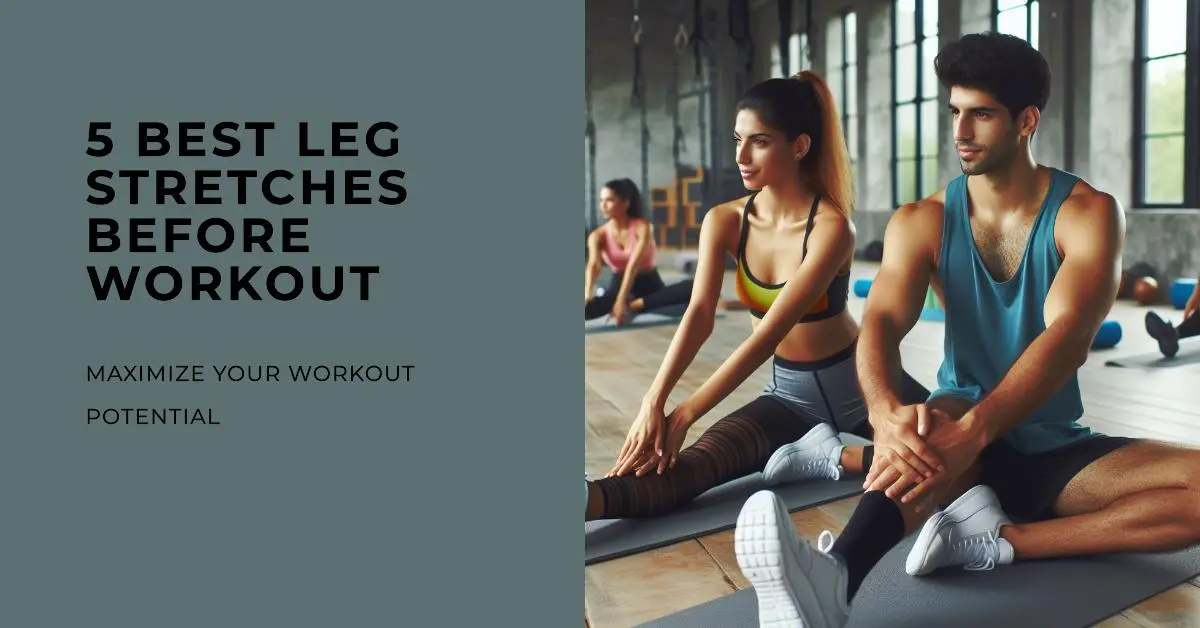Stretching before a workout is often underestimated, yet it plays a crucial role in preparing the body for physical activity. Specifically focusing on leg stretches before workout is important for optimizing performance and preventing injuries. These stretches not only increase flexibility but also improve the range of motion in the leg muscles, allowing for smoother and more efficient movements during exercises such as squats, lunges, and leg presses. By including the best leg stretches before workout, you can ensure that your muscles are properly primed for the demands of your workout session, leading to improved overall fitness results.
What are Leg stretches?
Leg stretches are exercises designed to increase flexibility and range of motion in the muscles of the legs. They involve elongating and relaxing the muscles through different movements and positions, targeting areas such as the quadriceps, hamstrings, calves, hips, and glutes. Leg stretches are commonly performed before physical activity, such as workouts or sports, to prepare the muscles for exertion and reduce the risk of injury. They help to improve muscle elasticity, decrease muscle tension, and improve overall performance during physical activities. Including leg stretches before workout into your routine can promote better muscle health, mobility, and flexibility, contributing to an overall healthier and more active lifestyle.
Benefits of Leg Stretches Before Workout
Leg stretches before workout give many benefits that contribute to improved performance and reduced risk of injury. Some of the key advantages include:
- Increased Flexibility: Leg stretches before workout help to elongate and loosen tight muscles, improving overall flexibility. This increased range of motion allows for better movement efficiency during exercises.
- Enhanced Muscle Activation: Stretching the leg muscles before a workout can activate dormant muscle fibers, allowing them to engage more effectively during exercises. This leads to better muscle recruitment and performance.
- Improved Circulation: Stretching increases blood flow to the muscles, delivering oxygen and nutrients while removing metabolic waste products. This improved circulation promotes better muscle function and performance.
- Injury Prevention: By preparing the muscles and connective tissues for physical activity, leg stretches before workout reduce the risk of strains, sprains, and other injuries during workouts. They also help to improve joint stability and mobility, further reducing injury risk.
- Better Posture and Alignment: Leg stretches before workout can help correct imbalances and alignment issues in the lower body, promoting better posture and movement patterns. This not only reduces the risk of injury but also improves overall movement efficiency.
- Reduced Muscle Soreness: Performing leg stretches before workout can help alleviate muscle tightness and soreness, making it easier to perform exercises with proper form and technique.
- Enhanced Mind-Body Connection: Engaging in a pre-workout stretching routine allows for a focused mindset and helps to establish a connection between the mind and body. This mental readiness can improve exercise performance and concentration during workouts.
Including leg stretches before workout can have significant positive effects on your overall fitness journey, helping you to achieve better results while minimizing the risk of injury.
Leg Stretches Before Workout
Quadriceps Stretch
The quadriceps, located at the front of the thigh, are important for different lower body movements. To stretch them effectively:
- Stand upright with your feet hip-width apart.
- Bend your right knee, bringing your heel towards your glutes.
- Grasp your right ankle with your right hand and gently pull it towards your buttocks.
- Change sides after holding the stretch for 15 to 30 seconds.
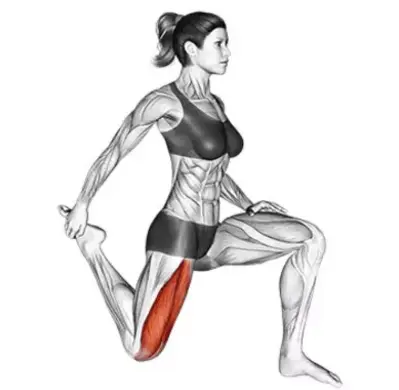
Hamstring Stretch
The hamstrings, located at the back of the thigh, are prone to tightness, especially in people who sit for prolonged periods. To stretch them effectively:
- Sit on the floor with one leg extended and the other bent with the sole of the foot against the inner thigh of the extended leg.
- Lean forward from your hips, aiming for your toes.
- After holding the stretch for 15 to 30 seconds, swap your legs.
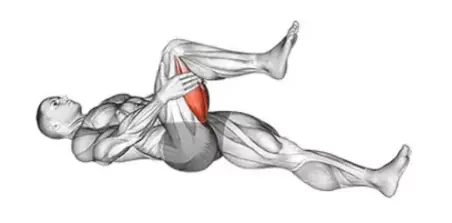
Calf Stretch
The calf muscles play a crucial role in movements like walking, running, and jumping. To stretch them effectively:
- Place your hands at shoulder height and face the wall.
- Step back with one foot and keep it straight, pressing the heel into the floor.
- Bend the front knee while keeping the back leg straight, feeling the stretch in the calf muscle.
- Hold for 15-30 seconds and then switch sides.
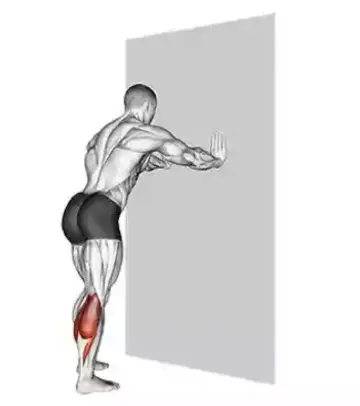
Hip Flexor Stretch
Restricted mobility and pain can result from tight hip flexors. To stretch them effectively:
- Kneel on one knee and place the other foot flat on the floor in front of you, making a 90-degree angle at the knee.
- Shift your weight forward, feeling the stretch in the front of the hip of the kneeling leg.
- Keep your back straight and tighten your abs.
- Hold for 15-30 seconds and then switch sides.
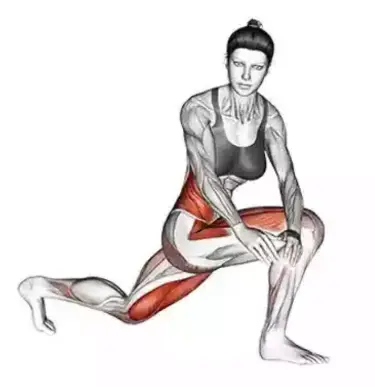
Adductor Stretch
The adductor muscles are located on the inner thighs and are often neglected in stretching routines. To target them effectively:
- Sit on the floor, legs outstretched in a V form.
- Lean forward from your hips, reaching towards the center.
- Keep your back straight and feel the stretch along the inner thighs.
- Hold for 15-30 seconds.
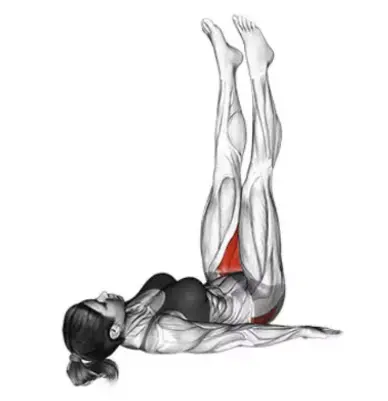
Tips for Effective Stretching
Effective stretching is key to maximizing the benefits of the best leg stretches before workout. Here are some tips to ensure you’re stretching effectively:
- Warm-Up: Prior to stretching, engage in a brief warm up activity such as light jogging or cycling to increase blood flow to the muscles and prepare them for stretching.
- Proper Form: Maintain proper form during each stretch to target the intended muscle group. Avoid overstretching or bouncing, which can lead to injury.
- Hold and Breathe: Hold each stretch for 15-30 seconds while focusing on deep, rhythmic breathing. This allows the muscles to relax and lengthen gradually.
- Listen to Your Body: Pay attention to your body’s signals during stretching. Discomfort is normal, but stop if you experience pain beyond a tolerable level.
- Consistency: Including these stretches into your pre-workout routine consistently to improve flexibility, reduce muscle tension, and improve overall performance during workouts.
By following these tips, you can ensure that your stretching routine is effective in preparing your leg muscles for optimal performance and injury prevention during your workout.
Common Mistake to Avoid
Avoiding common mistakes is crucial to ensure that you reap the full benefits of the best leg stretches before workout.
- Skipping Warm-Up: Neglecting to warm up before stretching can increase the risk of injury. Always warm up your muscles gently before starting any stretching exercises.
- Overstretching: Pushing your muscles too far beyond their limits can lead to strain or injury. Stretch to the point of tension, not pain, and avoid forcing your body into uncomfortable positions.
- Skipping Breathing: Forgetting to breathe deeply and rhythmically during stretching can hinder relaxation and muscle elongation. Focus on slow, controlled breathing to enhance the effectiveness of each stretch.
- Poor Form: Incorrect posture or alignment during stretches can diminish their effectiveness and increase the risk of injury. Pay attention to proper form and technique for each stretch to target the intended muscle group.
- Rushing Through Stretches: Hastily moving from one stretch to another without holding each one for a proper duration can limit the benefits of stretching. Take your time and hold each stretch for 15-30 seconds to allow for muscle relaxation and elongation.
By avoiding these common mistakes and practicing proper stretching techniques, you can maximize the effectiveness of the best leg stretches before workout, leading to improved flexibility, reduced muscle tension, and improved performance.
Conclusion
In conclusion, integrating the leg stretches before workout can significantly enhance your overall workout experience. By prioritizing stretching, you prepare your muscles for activity, improve flexibility, and reduce the risk of injury. These stretches target key muscle groups involved in leg movements, ensuring that you’re properly primed for the demands of your workout session. Remember to perform each stretch with proper form, hold them for a proper duration, and listen to your body’s signals. Consistency is key, so make stretching a regular part of your exercise routine to optimize your performance and achieve your fitness goals effectively.
FAQs
Q. How long should I hold each stretch?
It’s recommended to hold each stretch for 15-30 seconds to allow the muscles to relax and lengthen effectively.
Q. Can I perform these stretches after my workout instead?
While pre-workout stretching is beneficial, you can also include these stretches into your post-workout routine to aid in muscle recovery and flexibility.
Q. How often should I stretch my legs?
Aim to stretch your legs at least 2-3 times per week, if not daily, to maintain flexibility and prevent muscle tightness.
Q. Should I warm up before stretching?
Yes, performing a brief warm-up before stretching can help increase blood flow to the muscles and prepare them for deeper stretching.
Q. Can I modify these leg stretches before workout if I have limited flexibility?
Absolutely! Listen to your body and adjust each stretch according to your comfort level. You can gradually increase the intensity as your flexibility improves.
Q. Why are leg stretches before workout important?
Leg stretches prepare the muscles for physical activity, improve flexibility, and reduce the risk of injury during exercises like squats, lunges, and leg presses.
Q. How do leg stretches benefit workout performance?
Leg stretches before workout increase flexibility, improve muscle activation, improve circulation, prevent injuries, promote better posture and alignment, reduce muscle soreness, and establish a stronger mind-body connection.

